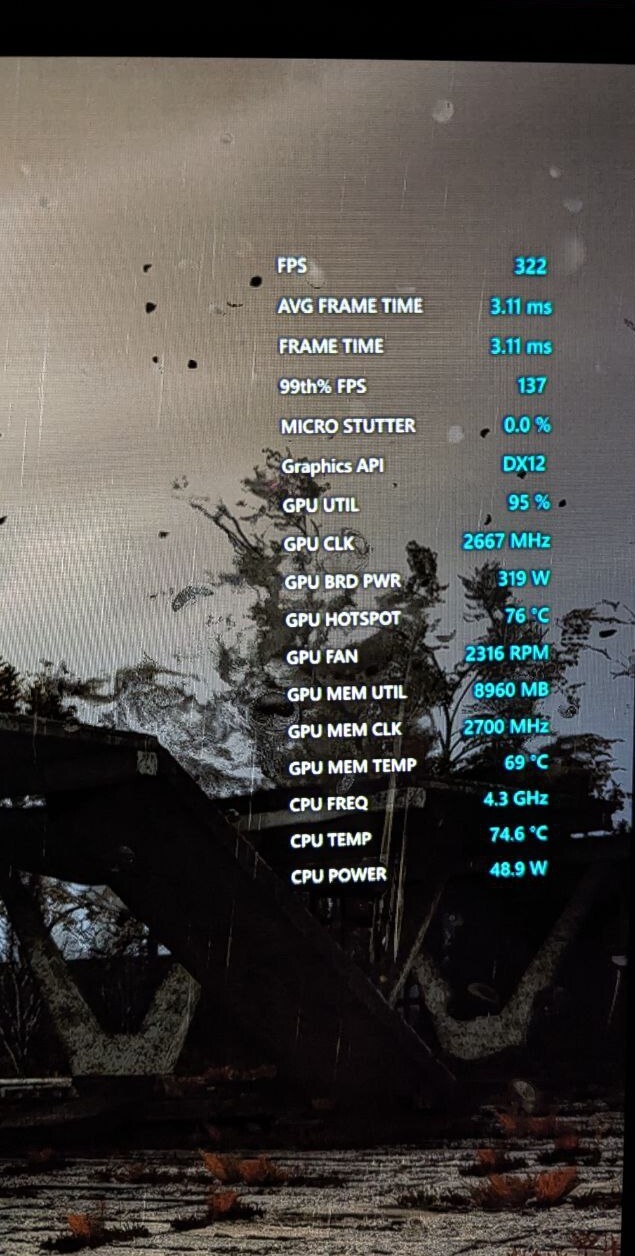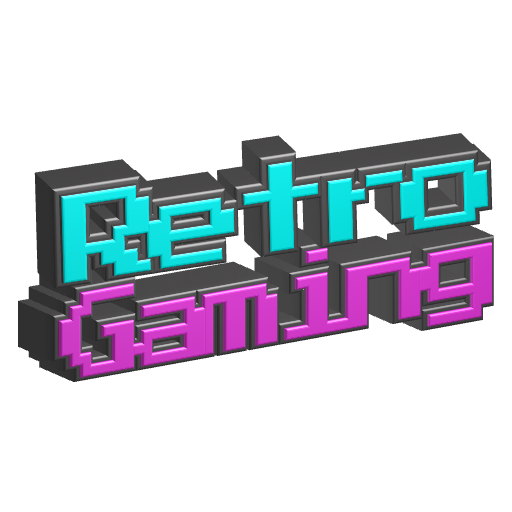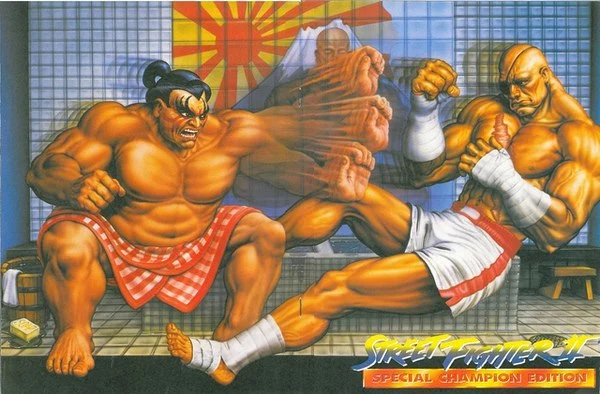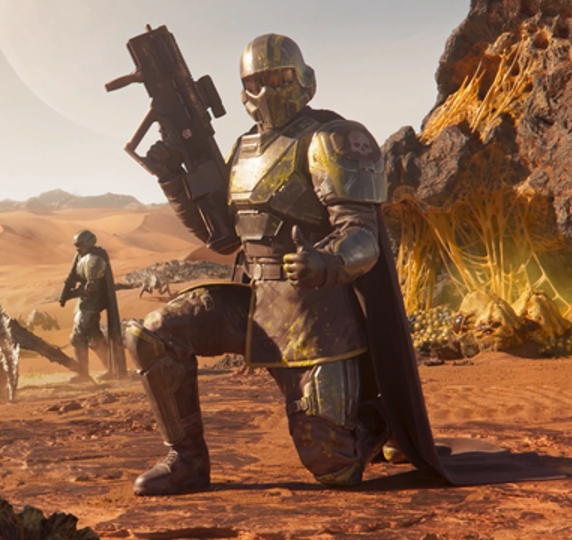i wonder if they got into trouble for doing things without being ordered to
Until the sales numbers came in
Pulling Mountain Dew and dorito fueled all nighters with my friends playing this game are such core memories.
So devs used to have extra time just to add multiplayer. My how times change.
Now every game has to be a multiplayer live service and the campaign/storymode is an afterthought for AAA
Not to mention time crunch for every AAA project
I bought STALKER 2, a masterpiece of post apocalyptic fiction and storytelling.
I was running the game on launch, an old friend calls me up on Discord, and says:
“So how is it?”
I say: “I don’t know yet, I just got to the first town past the tutorial.”
He says: “No, I mean the multiplayer.”
I lost the ability to think for a good 30-60 seconds trying to formulate the right string of words to respond with, from the psychic damage he’d inflicted with the presumption that it was a live service multiplayer game.
I think capitalism has weaponized brain rot into profits. As long as people open their wallets and not their brains, things will continue as planned. We’re literally paying for it.
What is a live service multiplayer shooter game and how is it different from like old school duke nukem 3D multiplayer?
I’ve been seeing the term “live service” and I can’t get a clear answer from Google. My computer gaming days are mostly behind me and I don’t always keep up.
Live service means the content comes from the company’s servers, and likely changes rapidly. The quintessential example is Fortnite. Updates are expected, not merely necessary fixes. Duke Nukem 3D had all the content installed on your computer from day one, without expectation that it would change (unless you made your own maps, or downloaded maps other USERS made).
That shit sounds addictive as fuck for the right kind of brain. Thanks for the explanation! .
The right kind of brain being most human being.
Companies have made everything in their power to find what is addictive and how to implement it in a game to squeeze more money from players.
Different hooks for different folks.
I escaped into Fallout 3 for a while in my late twenties, for instance. Multiplayer shooters are not very enjoyable to me. I don’t care to build the muscle memory to get good at it.
In general, gaming is no longer important to me. I do still play some Tetris, and my girl likes watching me play Zelda so it’s a good way for us to have some couch time before bed.
My life is pretty good, I have an easy wonderful marriage, I don’t need that sort of escape anymore. Have had trouble with alcohol since 2020.
My wife has had problems in the past with mobile puzzle games like Candy Crush. From what I understand, those sorts of games are particularly effective at catching women 20 and up.
Multiplayer shooters are particularly effective at catching boys and young men. I don’t have a source but I’m pretty sure most of the people playing shooters are pretty stereotypically male.
Anyhow, yeah, the right kind of ‘brain’ is shorthand for cis-het males ages 12-25, at a guess. And yada yada, other gendered folks will get caught as well but probably aren’t the primary target for fortnite or whatever shooter.
Live service also means with every update are new forms of monetization (cough cough skin microtransactions), because according to the c suite, live service means continuous profit, or whatever the fuck that means
Live service means there are constant “content” updates being released by the developer/publisher.
This can be character skins, weapon skins or other cosmetics, new maps or modes, new classes, skills or really anything. A lot of times these are wrapped up in to “battle passes” time limited, purchaseable collections of stuff designed to keep players engaging with the game daily for carrots being dangled in front of them. Most of these are also time limited so if you don’t jump through all of the Hoops before the timer expires you no longer have access to the content that you were playing for and paying for.
To relate to old school gaming think of them like mini-expansion packs. The part that most people take issue with is the strategy behind the majority of them.
Almost all live service games are designed to keep players running on the hedonistic treadmill looking for the dopamine hit of that next unlock. In the more egregious free-to-play games you see that crafted through dark patterns in a way that incentivizes users to buy shortcut items through the marketplace to either automatically collect the ranks needed for the unlock or provide double accrual rate for whatever the experience marker is.
The reason they are coined lives service is due the nature of them receiving this constant update drip in a manner that would be live as opposed to static in traditional, Old School multiplayer games where you may see a large expansion every once in awhile but certainly not a weekly or monthly drip feed of new shit for the players to grind away at trying to unlock.
So, how far are you into it?
Oh, I finished it already and got the true ending.
Just like Stalker 1, it pays to not blindly run at quest markers and make up your own mind.
The game is a treat, but struggles to run on many systems, so my recommendation is the following:
FSR 3.1: Quality (66% resolution scale)
Frame Generation: On
AMD Fluid Motion Frames 2: On
1440p Epic on a 7900XTX averages 60 FPS in busy towns like Rostok.
60 FPS Native -> 120 FPS FSR 3.1 -> 240 FPS AFMF
I’ve got a 240 Hz OLED (for the dark scenes), and the total video draw latency with all of that is 3.11 ms.

2"
Every shitty AAA release under crunch was not only stealing from you, but from gaming as a whole.
It’s amazing what happens when management leave Devs alone to do actual work instead of calling SCRUM bullshit.
Goldeneye64 : 1997 JIRA : 2002
scrum: 1986
Scum: 3000BC
Or anyone creative
My play was to always throw a ton of mines everywhere and just listen to the boom.
I would do this in Far Cry before raiding a base. Plant a few mines around the approaches to the base in case the alarm got tripped. Always fun to hear the “We’re coming in from the north!” BOOM
It’s funny seeing interviews with the devs and they basically go “We had no idea what we were doing with the N64. How did this succeed?”
Then you find out about stuff like the fully functional ZX Spectrum Emulator in the game and begin wondering too.
That puts the fact that Jet Pac was in DK64 into a different perspective.
So many great memories playing GoldenEye on the rec room big screen TV in my dorm in college in '97 and '98.
Reminds me of the graphing calculator on Macs. Guy wanted it in system 7 so bad he ignored getting fired, broke into the office, and snuck it into the master build.
(beginning of) The Graphing Calculator Story
The Graphing Calculator Story
Copyright © 2004 Ron Avitzur.
Pacific Tech’s Graphing Calculator has a long history. I began the work in 1985 while in school. That became Milo, and later became part of FrameMaker. Over the last twenty years, many people have contributed to it. Graphing Calculator 1.0, which Apple bundled with the original PowerPC computers, originated under unique circumstances.
I used to be a contractor for Apple, working on a secret project. Unfortunately, the computer we were building never saw the light of day. The project was so plagued by politics and ego that when the engineers requested technical oversight, our manager hired a psychologist instead. In August 1993, the project was canceled. A year of my work evaporated, my contract ended, and I was unemployed.
I was frustrated by all the wasted effort, so I decided to uncancel my small part of the project. I had been paid to do a job, and I wanted to finish it. My electronic badge still opened Apple’s doors, so I just kept showing up.
I had many sympathizers. Apple’s engineers thought what I was doing was cool. Whenever I gave demos, my colleagues said, “I wish I’d had that when I was in school.” Those working on Apple’s project to change the microprocessor in its computers to the IBM PowerPC were especially supportive. They thought my software would show off the speed of their new machine. None of them was able to hire me, however, so I worked unofficially, in classic “skunkworks” fashion.
I knew nothing about the PowerPC and had no idea how to modify my software to run on it. One August night, after dinner, two guys showed up to announce that they would camp out in my office until the modification was done. The three of us spent the next six hours editing fifty thousand lines of code. The work was delicate surgery requiring arcane knowledge of the MacOS, the PowerPC, and my own software. It would have taken weeks for any one of us working alone.
At 1:00 a.m., we trekked to an office that had a PowerPC prototype. We looked at each other, took a deep breath, and launched the application. The monitor burst into flames. We calmly carried it outside to avoid setting off smoke detectors, plugged in another monitor, and tried again. The software hadn’t caused the fire; the monitor had just chosen that moment to malfunction. The software ran over fifty times faster than it had run on the old microprocessor. We played with it for a while and agreed, “This doesn’t suck” (high praise in Apple lingo). We had an impressive demo, but it would take months of hard work to turn it into a product.
I asked my friend Greg Robbins to help me. His contract in another division at Apple had just ended, so he told his manager that he would start reporting to me. She didn’t ask who I was and let him keep his office and badge. In turn, I told people that I was reporting to him. Since that left no managers in the loop, we had no meetings and could be extremely productive. We worked twelve hours a day, seven days a week. Greg had unlimited energy and a perfectionist’s attention to detail. He usually stayed behind closed doors programming all day, while I spent much of my time talking with other engineers. Since I had asked him to help as a personal favor, I had to keep pace with him. Thanks to an uncurtained east-facing window in my bedroom, I woke with the dawn and usually arrived ten minutes before Greg did. He would think I had been working for hours and feel obliged to work late to stay on par. I in turn felt obliged to stay as late as he did. This feedback loop created an ever-increasing spiral of productivity.
People around the Apple campus saw us all the time and assumed we belonged. Few asked who we were or what we were doing.When someone did ask me, I never lied, but relied on the power of corporate apathy. The conversations usually went like this:
Q: Do you work here? A: No. Q: You mean you’re a contractor? A: Actually, no. Q: But then who’s paying you? A: No one. Q: How do you live? A: I live simply. Q: (Incredulously) What are you doing here?!
See link for remainder
Great read, thanks!
What a fantastic read.
Dozens of people collaborated spontaneously, motivated by loyalty, friendship, or the love of craftsmanship. We were hackers, creating something for the sheer joy of making it work.
I’m moved by this. I feel that this is what HN used to be maybe 10 years ago. Now its just VC crap and making money as quickly as possible with lock-in market-corning crapware.
I worked in video games in the 2000, same feeling, good memories and shenanigans (in Ghost Force, we hid a level with pigs and exploding penguins for example), and I call most of the coworkers my friends still.
Now it’s just crap it seems.
Maybe it was the raw new stuff getting thrown at you all the time. Today it’s just “a PC”, slightly faster. Same engine.
Or I’m getting old :-D
Yeah, that fucking rocked.
Whoa that was so good.
Do you know where I could find more stuff like that? I read “In the beginning was the command line” not too long ago and loved that.
http://www.pacifict.com/story/
For anyone wanting a read.
“Broke in” is a bit of an exaggeration. Their cards simply weren’t turned off and they managed to fake it until the project was finished.
If you read the whole thing you’ll learn that for some time their cards were in fact deactivated and they had to sneak in behind other people.
It’s been decades since the last time I read it in full.
Their cards were turned off eventually, leading them to sneak in for awhile. Great story, although somewhat insane
I cut my teeth on system 7 (well, 7.5) and this is news to me. Did it get quickly nuked?
Nope, it’s been part of Mac OS ever since, partly because math teachers loved how it let kids play with math.
Now it’s called Grapher.
I think I found the gap in my knowledge: it looks like it only shipped with PPC versions. I had a 68k Performa as a teenager. By the time I got a PPC box it was well into system 8’s lifespan and I had stopped opening every little thing, probably due to internet providing those dopamine hits lol.
Thank you, TIL!
Dude that graphing calculator was awesome—way ahead of anything at the time.
I never could get a hang of using the N64 controller for FPS. Doubly so when you’re facing Oddball as an opponent.
Nobody is allowed to pick Oddjob! House rules in every house I’ve played in.
We allowed Oddjob to be chosen, but then the other 3 players would be allowed to team up and murder you on sight.
Plus, you were legally allowed to look at their quarter of the screen to see where they were at and kill them until they picked someone else.
Nature always adapts.
My house rules don’t have an explicit rule - go ahead and pick Oddjob - but know we will loudly judge you and team up to ensure that mistake doesn’t happen again.
I don’t think I’d like it now, but back before two-thumbstick FPS games existed, I didn’t even question it.
There was a controller layout for Goldeneye and Perfect Dark where you used two N64 controllers, so you had two analog sticks and two Z buttons. It was extremely awkward to use A or B to cycle through weapons or open doors because of the button placement, but Goldeneye was actually the first two-thumbstick FPS game I played.
I wish I had known back in 1997!
Had to lookup a video, this is how it worked: https://youtu.be/dZaEpugk3hY?t=235
Fun fact, you could use the second controller to aim and shoot (without a reticle) during cutscenes! Really funny and awkward when you can kill major characters (including Bond) during a cutscene and of course the game proceeds like it never happened. :p
(Maybe only during the end-mission cutscenes. I can’t remember 100%)
Yeah GoldenEye is one of those games that was absolutely incredible at the time it came out - but is painful to go back to now. Which is too bad, because the game was amazing and had a ton of replayability at the time.
It’s actually possible to play it with modern controls with the right control scheme and remapping. Feels great!
Yeah, I had the weirdest experience going back and trying it recently. Was hard to play. But back then, boy those controls felt so amazing and smooth!
Someone else said the same thing a couple weeks ago but I had the opposite experience. When it came out I’d already been playing stuff like Doom on PC so I already knew the controls on for GE were awkward, but I made the adaptation back then. Now it’s still in muscle memory.
Hell yeah that’s awesome! I played a lot of GE back in the day, so the muscle memory has got to still be there for me too. Wonder how many hours it’d take to unlock it.
I would say 007 Nightfire, my experience being on the GameCube, perfected the Goldeneye control scheme formula. That game was a joy to play.
License to Kill
Knowing how to crouch
Both were not optional
To be fair, that was probably the worst controller ever made. Even the Duke was more friendly, just gave cramps.
I loved that controller I think it’s such a shame it’s so universally panned. Don’t get me wrong, I wish it had dual sticks and I also wish the stupid main joystick wasn’t built such that it breaks terribly from normal use, I also would have appreciated if they hadn’t put those stupid ridged rings on the stick that shred up your skin, but I still think it was really innovative and fun to use and for the most part, pretty comfortable including it’s alternate mode of operation with the D-pad.
deleted by creator
The ultimate pain: License to kill. Slappers only. Oddjob.
Somewhere among the top 1…
As an avid aq2 player this multiplayer mode was a literal joke when this game came out. I was like why is everything so damn slow???
Innovative? Lmfao.
AQ2 came out the year after Goldeneye
Seriously. That other multiplayer first person shooter on the console was MUCH better. I can’t remember the name though… Any idea what it was?
Perfect Dark. Also came out after. Goldeneye was revolutionary, everybody played it. Any house I went to, we played Goldeneye.
Perfect Dark wa great, but Goldeneye seemingly scratched the itch for FPS amongst casual gamers at the time, and so it was never as popular.
I don’t know what it is but if it’s a multiplayer PFS then I bet it came out after Goldeneye
This guy gets it :-)
Halo CE
That came out four years later.
Yeah, just mentioned it because it’s really when console shooters went mainstream.















